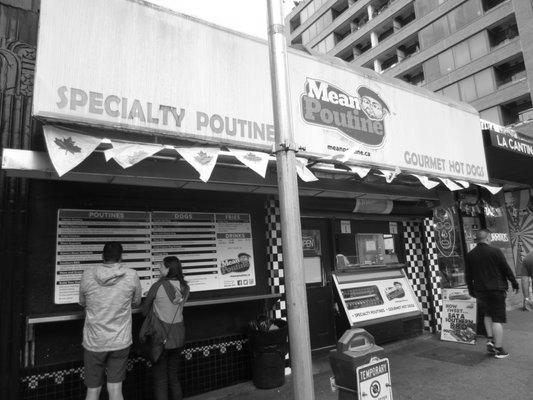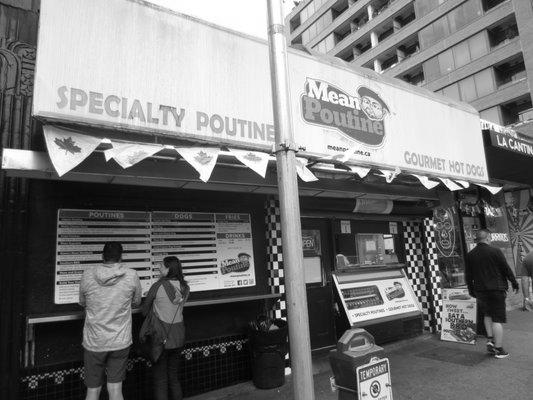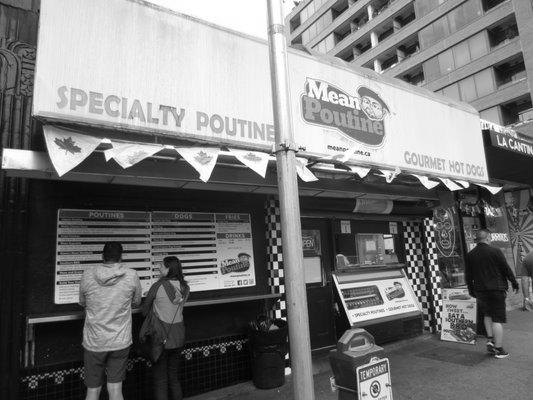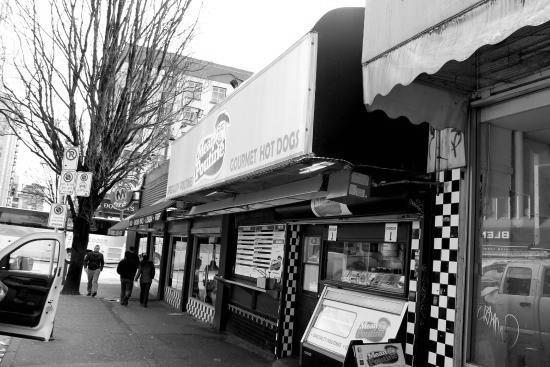01 intro
poutine is a dish of french fries, gravy and cheese curds, served with a side of beef gravy and topped with cheddar cheese curds. It is essentially the lovechild of two other dishes: poutine (a bowl of french fries, gravy and cheese curds) and frites (french fries, gravy, cheddar cheese curd). The origins of poutine are disputed. Some say it originated in Quebec. Others say it was created by a British chef in Quebec City using the name for his dish “potato pie”.
The origins of poutine are perhaps less important than one might think for people who write about it or eat it. It seems to be that dear friends often tell me that poutine was invented by them when they were out eating at a gas station somewhere in Vancouver while they were on their way to or from work.
I’m not sure where this story came from or how much truth there is to it. I suppose we should all keep an eye on whether this one eventually gets to market or not because if you want to be taken seriously as a foodie, you have to get your product right first time around.
02 paragraph one
I think the words “poutine” and “Vancouver” have a lot of meaning for the average person. I say average because I don’t know much about poutine.
But I do know that it is one of those Canadian dishes that can be found everywhere. And that it is an amalgamation of two very different things: fries (savoury and salty), gravy, cheese curds, and a pretty wide variety of toppings.
The first thing you need to do when you are in Vancouver is make up your mind what kind of poutine you want to order. The best way to make sure you get the right kind is to go to a local restaurant called Sabourin’s Poutine Bistro . They specialize in classic poutines from all over Canada (the US), but they also make their own version which is their own creation. Their version has mexican cheese curds, poutine gravy, bacon or ham, cheese curds, bacon or ham gravy, mushrooms or onions, green peppers or onions, pickles and enough toppings on top so that there are three different kinds of poutines on the plate at once (though this isn’t something they advertise).

Some people will say that Sabourin’s doesn’t do anything original with their food; they just use what they already have on hand, but I think there’s more than that going on here. The sheer variety of options shows the sheer variety of tastes around this dish in general; it doesn’t matter if you want your fries covered with gravy or not covered with gravy — there are plenty other alternatives available for comparison. And if you aren’t interested in trying out every single one individually then having a picture such as this will help cut down on any potential confusion when ordering:
And most importantly:
Sabourin’s Poutines are served up piping hot from their ovens!
03 paragraph two
The best way to describe poutine is make peanut butter and gravy. If you don’t know what a poutine is, do something awesome for the rest of us!
Now, I know what you’re thinking: “So, how does that compare to poutine in Vancouver?” I’ll tell you how it compares:
Poutine is a staple of Canadian cuisine. It is enjoyed by everyone from children to grownups.

For example, it can be found at chain restaurants across the country. It originated in Quebec (Canada), which is where we get most of our Canadian food – but has since spread to some pretty far-flung corners of Canada (like British Columbia).
The best place to find it also happens to be one of Vancouver’s busiest streets: Hastings Street West. This particular location serves up an authentic version of the dish with a helpings of gravy and cheese curds. Don’t let the fancy name fool you – this thing is delicious! And if you haven’t ventured down there yet, now would be a good time!
We have been working on localizing things for some time now – but couldn’t wait any longer for our first exploration into the world of poutine! We hope this post gives you some ideas about what we are doing right here in Vancouver, and why we decided that it just wouldn’t work if we didn’t share some local poutine history with you first…
04 paragraph three
I was recently reminded of a story from my childhood, one that I’ve always found deeply ironic, and one which I never really understood until recently. In the late 70s and early 80s, the city of Vancouver was known for its “poutine,” a thick and hearty French Canadian dish whose history goes back to the 20th century.
At some point in my childhood, I was given a plate by a neighbor; it was covered with gravy, cheese curds and chips. He said it was called poutine because it had “poulet” in French. As you may imagine, this is not at all like the poutine we know today. In fact, there are many other ingredients in this dish today — such as cheese curds (in Canada), French fries (in America) — and the gravy is different too.
But what did he mean by “poulet”?

I couldn’t bring myself to hunt for that plate any more than I now can for poutine; but I finally came up with a plausible explanation when I had to translate some sayings out of context into English:
POULET = little bird POUPEE = little girl POULOT = little chick POULET = little duck POULETTE = little chick POUPEETTESTAFFE = tiny stewed chicken POUPEETTESTROIS / POUPEETTESTROISE = stewed chicken and rice / fried chicken with spices POUPETTE / POUPETTEAUX = chicken soup (cut up pieces) 1st part 2nd part 3rd part 4th part 5th part 6th part 7th party 8th party 9th party 10th party 11th party 12th party 13th party 14th party 15th party 16th party
So what does this have to do with “poutine vancouver”? Well aside from having an interesting story about coming up with my own characterization of food (which I will explain in-depth later), we also happen to be close to this location: on Granville Island in downtown Vancouver! (Reserve your spot!) So if we serve poutine there… then why not Vancouver? It would be a lot easier than trying to convince someone who lives elsewhere that our product is good enough for them! LOL! And honestly, if they were interested enough in our product they would know
05 conclusion
In this post, we discussed the value of a strong product-market fit, as it applies to startups. We also looked at some practical considerations for launching products, who your ideal customers are and what you need to invest in to ensure their continued participation.
We also touched upon the importance of pricing and monetization strategies for both long-term success and the ability to grow your company, along with a couple of tips on building a community around your product. In this post, we’ve gathered a few thoughts on each of these topics.

